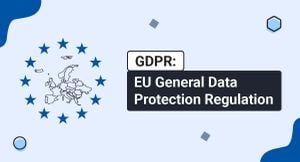Multi-Unmanned Aerial Vehicle (UAV) systems are becoming increasingly pivotal in numerous fields, such as urban surveillance, environmental monitoring, and precision agriculture. A recent study introduces IRADA (Integrated Reward Aggregation for Distributed Allocation), which proposes a novel distributed task allocation method for multi-UAV persistent monitoring, addressing challenges posed by dynamic environments where information can become stale.
The pressing need for efficient monitoring solutions stems from the burgeoning applications of UAVs, as they continuously observe and collect information from distributed points of interest (POIs). Each POI's information quality diminishes over time, creating urgency for timely observations. This degradation, compounded by UAV energy constraints and communication limitations, challenges effective monitoring strategies.
The innovative features of the IRADA framework are most apparent when considering the Gaussian Mixture Model (GMM) employed for reward aggregation. This approach allows UAVs to optimize their decision-making process by taking real-time rewards related to the efficiency of information collection, the range of operations affected by energy constraints, and potential communication opportunities with fellow UAVs.
Extensive simulations validated the effectiveness of the IRADA approach across various configurations; it demonstrated superior performance and efficiency compared to traditional centralized methods. The research team noted, "Our approach achieves superior performance... across various system configurations, including different numbers of UAVs, travel budgets, and communication ranges.” This highlights the dynamic adaptability of IRADA, particularly under the constraints of changing environmental states.
Under this framework, UAVs are guided by localized reward maps created through GMMs, which simplifies the computational complexity typically encountered with centralized planning. The methodology fosters effective distributed operation, enabling each UAV to make informed decisions autonomously. This creates synergies as UAVs approach high-value regions through strategic neighbor visits rather than direct paths, enhancing energy efficiency during operations.
The findings also accentuate the system's resilience when challenges arise, such as UAV failures. The decentralized nature of the task allocation means remaining UAVs can adaptively redistribute their tasks based on current operational statuses, ensuring continued monitoring without explicit coordination mechanisms. The authors remark, "This mechanism encourages UAVs to approach high-value nodes gradually through visiting neighbors rather than direct approaches." Such gradual transitions are conducive to maintaining overall coverage, minimizing disruptions caused by loss of individual units.
Overall, these findings reinforce the importance of swarm intelligence and decentralized planning strategies for the future of UAV deployments. The IRADA framework exemplifies how combining advanced modeling techniques like GMM with practical operational constraints can significantly augment the performance and robustness of multi-UAV systems.
While the IRADA framework boasts several advantages, the authors admit there are opportunities for future enhancements. They propose incorporating adaptive optimization of model parameters based on real-time system dynamics, which would enable even greater responsiveness to the environment. The communication-driven task coordination strategy might also benefit from predictive modeling to boost connection opportunities.
Future endeavors could explore incorporating machine learning techniques, allowing the system to optimize reward weights dynamically through historical performance analysis. This outlook on UAV operations could potentially lead to breakthroughs, especially as they are tasked with increasingly complex and unpredictable scenarios.



